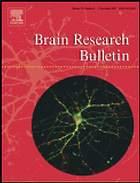
“Deficient bioenergetics and diminished redox conservation have been implicated in the development of cerebral ischemia/reperfusion injury.
In this study, the mechanisms underlying the neuroprotective effects of cannabidiol (CBD), a nonpsychotropic compound derived from Cannabis sativa with FDA-approved antiepilepsy properties, were studied in vitro using an oxygen–glucose-deprivation/reperfusion (OGD/R) model in a mouse hippocampal neuronal cell line.
This study is the first to document the neuroprotective effects of CBD against OGD/R insult, which depend in part on attenuating oxidative stress, enhancing mitochondrial bioenergetics, and modulating glucose metabolism via the pentose-phosphate pathway, thus preserving both energy and the redox balance.
Cannabidiol (CBD) is a nonpsychoactive cannabinoid derived from Cannabis sativa and a weak CB1 and CB2 cannabinoid receptor antagonist, with very low toxicity for humans. It has recently been demonstrated in vivo and in vitro that CBD has a variety of therapeutic properties, exerting antidepressant, anxiolytic, anti-inflammatory, immunomodulatory, and neuroprotective effects. Our results provide novel insight into the neuroprotective properties of CBD, which involves the regulation of the mitochondrial bioenergetics and the glucose metabolism of hippocampal neurons during OGD/R injury.
In summary, our results suggest that CBD exerts a potent neuroprotective effect against ischemia/reperfusion injury by attenuating intracellular oxidative stress, enhancing mitochondrial bioenergetics, and optimizing glucose metabolism via the pentose-phosphate pathway, thus strengthening the antioxidant defenses and preserving the energy homeostasis of neurons. More in-depth studies are required to investigate the precise mechanism underlying the success of CBD treatment and to determine the actual role of CBD in cerebral ischemia.” https://www.ncbi.nlm.nih.gov/pmc/articles/PMC5247568/




